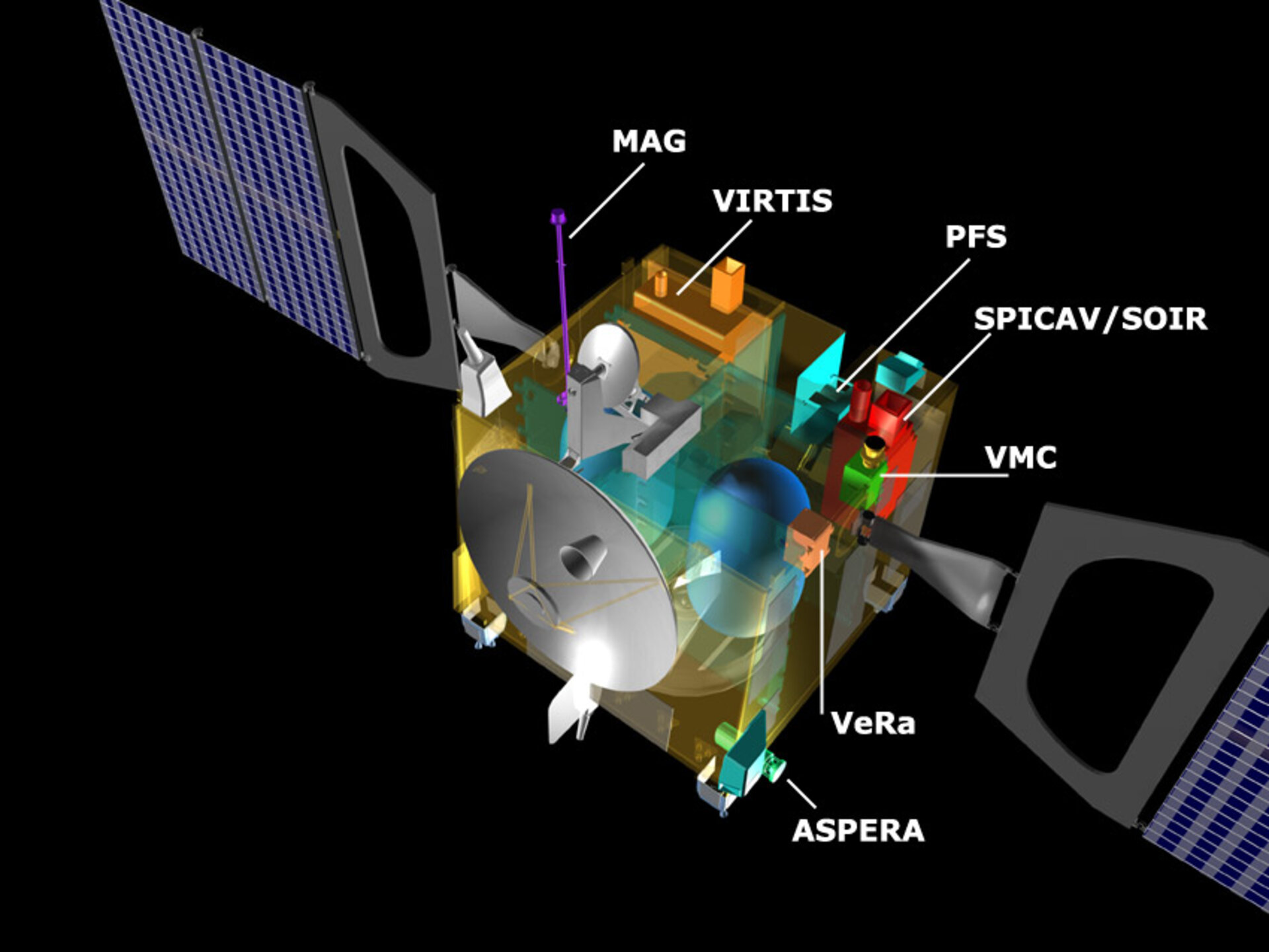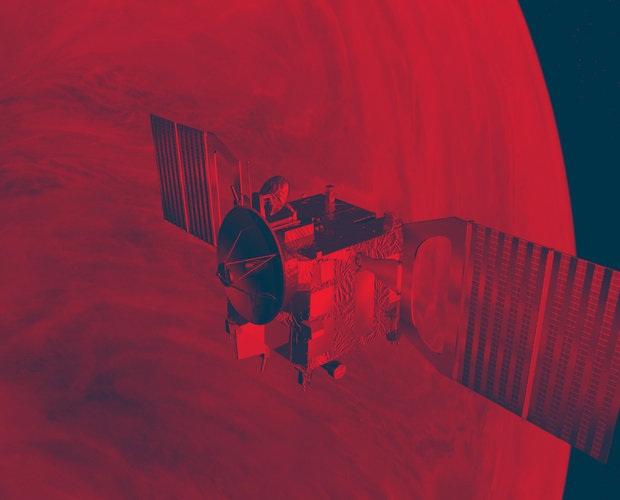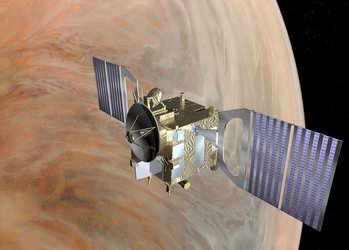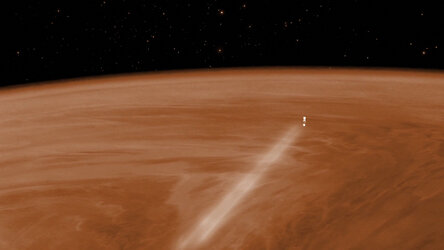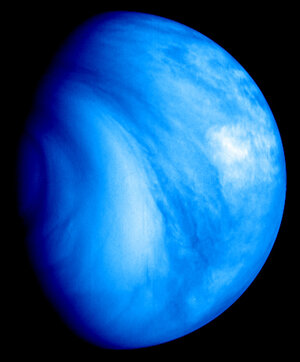Venus Express orbiter instruments
|
Analyser of Space Plasma and Energetic Atoms (ASPERA)
Led by Institute of Space Physics, Kiruna, Sweden
ASPERA investigated the interaction between the solar wind and the atmosphere of Venus by measuring outflowing particles from the planet’s atmosphere and the particles making up the solar wind. It studied how the molecules and ions escape the planet.
Heritage: Mars Express
Venus Express Magnetometer (MAG)
Led by IWF, Graz, Austria
Venus has no detectable internal magnetic field, and the field that exists around the planet is entirely due to the interaction between the solar wind and the atmosphere. The MAG magnetometer studied this process to help in understanding the effect this has on Venus’s atmosphere, for instance the atmospheric escape process.
Heritage: Newly developed for Venus Express (but reusing sensors design from the Rosetta lander)
Planetary Fourier Spectrometer (PFS)
Led by IFSI-INAF, Rome, Italy
PFS could measure the temperature of the atmosphere between altitudes of 55–100 kilometres at a very high resolution. It also measured the surface temperature in the quest to search for volcanic activity. In addition to its temperature measurements, PFS made composition measurements of the atmosphere.
Heritage: Mars Express
Ultraviolet and Infrared Atmospheric Spectrometer (SPICAV/SOIR)
Led by Service d’Aeronomie du CNRS, Verriesres, France; Institute for Space Aeronomy, Belgium; IKI, Russia
SPICAV assisted in the analysis of Venus’s atmosphere. In particular, it searched for the small quantities of water expected to exist in the Venusian atmosphere. It also looked for sulphur compounds and molecular oxygen in the atmosphere. It determined the density and temperature of the atmosphere at 80–180 kilometres altitude.
Heritage: SPICAV inherited from Mars Express, new development for SOIR
Venus Radio Science Experiment (VeRa)
Led by Univ. der Bunderswehr, Munich, Germany
VeRa used the powerful radio link between the spacecraft and Earth to investigate the conditions prevalent in the ionosphere of Venus. Scientists also used it to study the density, temperature, and pressure of the atmosphere from 35–40 km up to 100 km from the surface, and to determine roughness and electrical properties of the surface. It also allowed investigations of the conditions of the solar wind in the inner part of the Solar System.
Heritage: Rosetta
Ultraviolet/Visible/Near-Infrared mapping spectrometer (VIRTIS)
Led by CNR-IASF, Rome, Italy, and Observatoire de Paris, France
VIRTIS studied the composition of the lower atmosphere between 40 kilometres altitude and the surface. It tracked the clouds in both ultraviolet and infrared wavelengths and allowed scientists to study atmospheric dynamics at different altitudes.
Heritage: Rosetta
Venus Monitoring Camera
Led by MPS, Katlenburg-Lindau, Germany
VMC, a wide-angle multi-channel camera, took images of the planet in the near infrared, ultraviolet and visible wavelengths. VMC could make global images and study the cloud dynamics. In addition it assisted in the identification of phenomena seen by other instruments.
Heritage: Newly developed for Venus Express (reusing parts of Mars Express’s High Resolution Stereo Camera)


